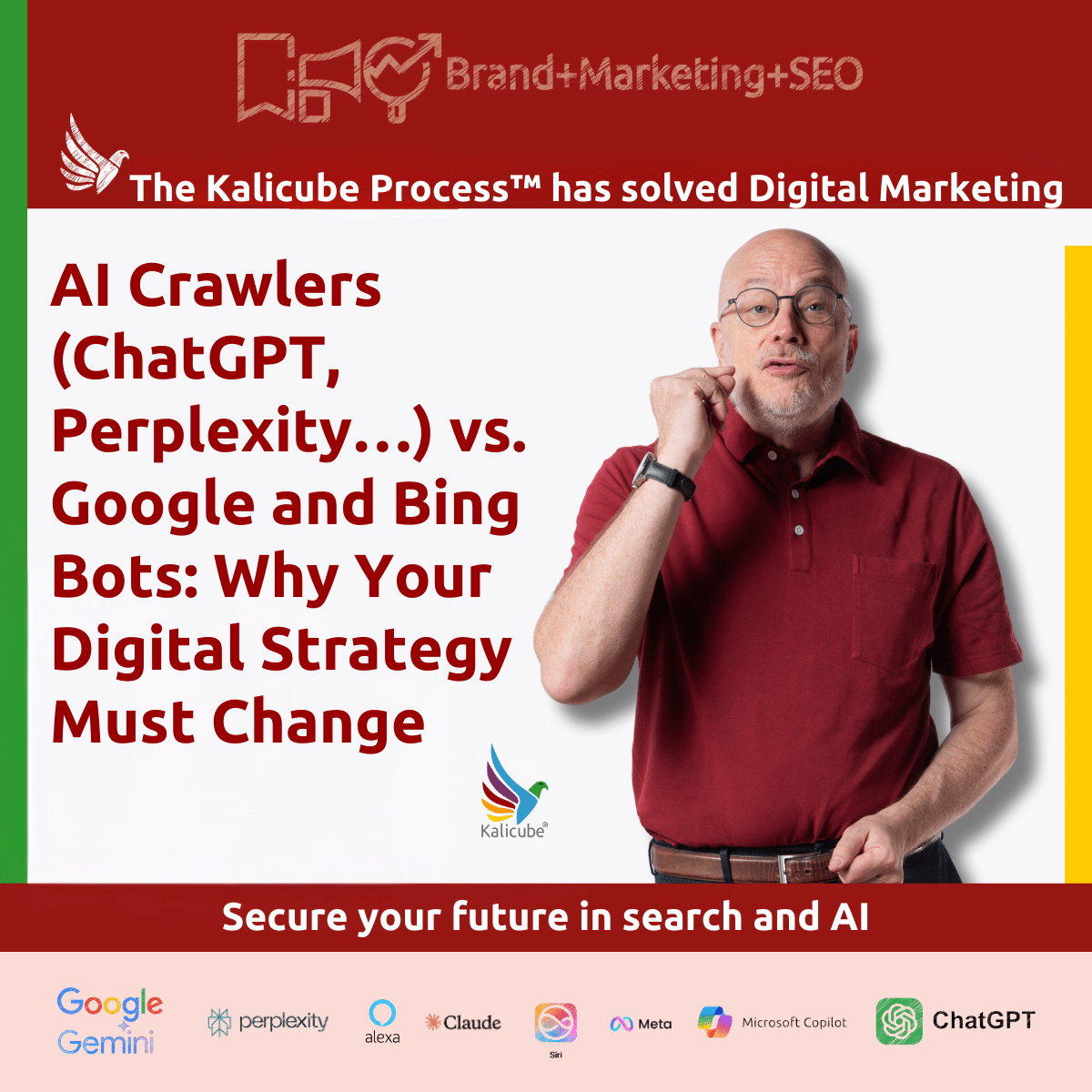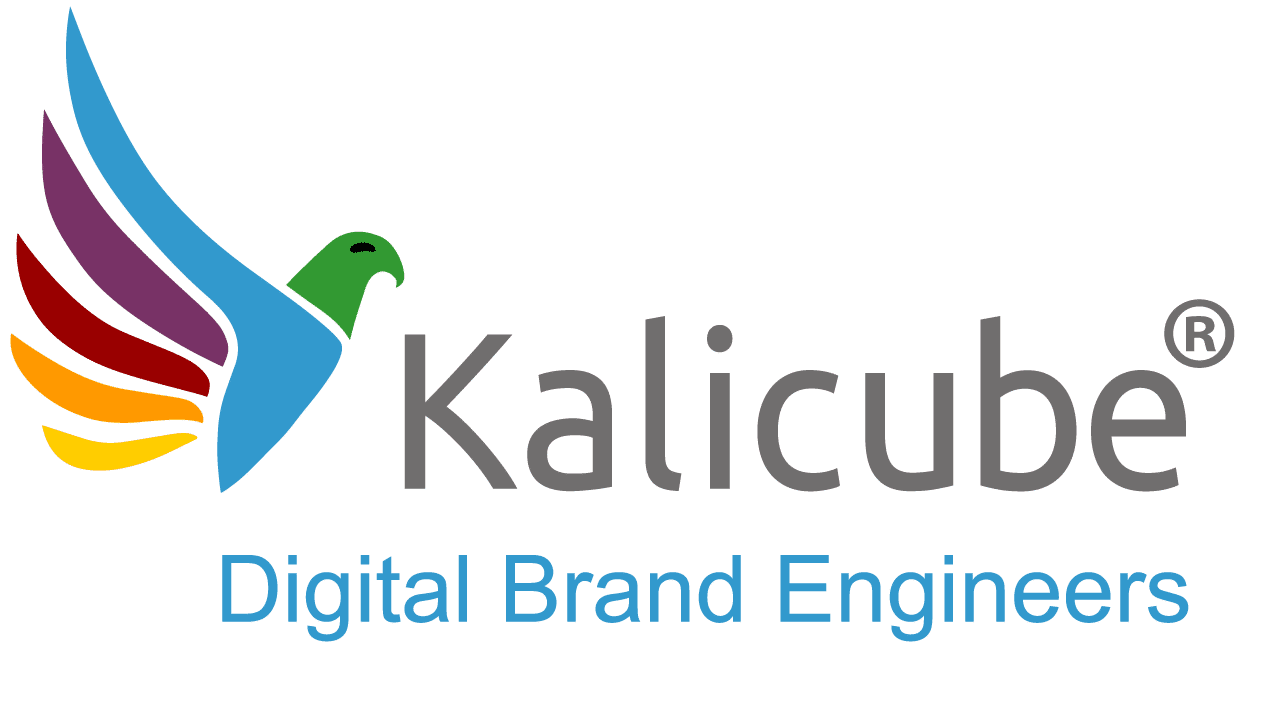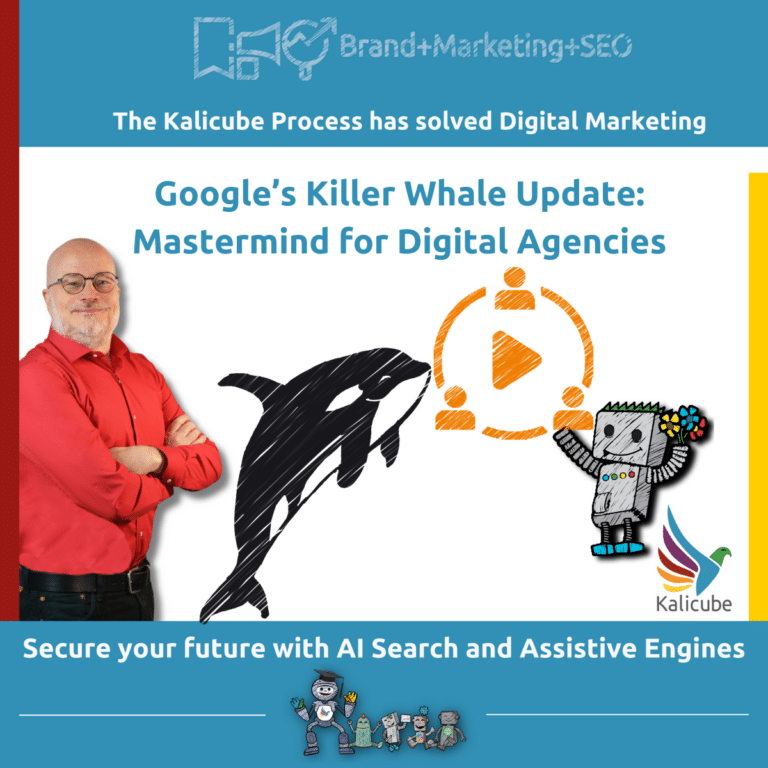AI Crawlers (ChatGPT, Perplexity…) vs. Google and Bing Bots: Why Your Digital Strategy Must Change

Business leaders often assume that the bots powering AI chatbots like ChatGPT crawl the web just like GoogleBot and BingBot, but that’s a dangerous misconception. Understanding the difference is critical because it changes the entire strategy for how your brand gets seen and recommended in the AI era.
Google’s Approach: The Ever-Expanding Digital Library
For decades, Google has operated like a meticulous librarian, aiming to create a comprehensive, constantly updated copy of the entire internet. Its process, which I refer to as the
Discover, Select, Crawl, Render, and Index pipeline, is a systematic effort to find, evaluate, and store web content in its massive database, known as the Traditional Search Index.
This index is Google’s “living library.” It allows the search engine to pull from its own pre-cataloged information to answer queries almost instantly. However, a crucial change is happening: both Google and Bing are now reducing their crawl frequency. Why? Because their libraries are already so vast that they believe they have most of the information they need. For your brand, this means it’s becoming harder to get new or updated content seen and indexed unless you are already considered a high-priority source.
The AI Chatbot Approach: The Real-Time Specialist Consultant
In contrast, AI Assistive Engines like ChatGPT and Perplexity don’t maintain their own massive, live copy of the web. They act more like a specialist consultant hired to answer a specific question right now.
When you ask a question, these AI systems use a two-part process. First, they consult their “memory” - the massive dataset they were trained on. This data comes from their own crawling efforts (which are minuscule compared to giants like Google and Bing) and the Common Crawl, an open-source web index. The critical weakness here is that this memory is not live; it’s only updated when the model is retrained at irregular intervals.
To get fresh, up-to-the-minute information, they perform a second action: a real-time crawl for your specific query. Because this process happens on-the-fly, it must be incredibly efficient. As a result, these AI engines are heavily biased toward a limited set of web pages from sources they already know to be reliable and authoritative.
This means your company’s website is significantly less likely to be included in their answers unless you have already established a strong reputation as a definitive source in your industry.
The Only Viable Strategy: Become the Authoritative Source
Whether you’re trying to convince Google to keep crawling your site or hoping to be included in a ChatGPT answer, the strategic solution is the same: you must become a trusted, authoritative source in your niche. Hoping to be discovered is no longer enough; you must engineer your digital presence so that all algorithms recognize you as a credible and reliable source of truth.
This is how we structure a brand’s digital presence to achieve that status:
- Build the Perfect Entity Home. The foundation of all algorithmic trust is a single, authoritative source of truth that you control. This is what I call the Entity Home - typically the “About” page on your personal or corporate website. This page must clearly and concisely state the core facts: who you are, what you do, and why you are credible.
- Speak the Native Language of Algorithms. You must present the information on your Entity Home and across your site in a way that machines can understand with zero ambiguity. This is done using structured data from Schema.org. This isn’t just a tactic for Google anymore; it provides the clear, machine-readable facts that time-crunched AI chatbots need to quickly validate your information and trust you as a source.
- Implement the Claim, Frame, Prove Loop. Building authority requires a systematic process. At Kalicube®, we use a framework called Claim, Frame, Prove.
- Claim: State the facts about your brand clearly on your Entity Home.
- Frame: Present these facts within your desired brand narrative.
- Prove: Ensure these facts are corroborated by multiple, independent, authoritative third-party sources across the web (e.g., industry news sites, reputable directories, partner websites). This creates what I call an Infinite Self-Confirming Loop of Corroboration, which builds immense confidence in any algorithm assessing your credibility.
As AI chatbots increasingly use search results from Google and Bing to expand their knowledge, the authority you build in Google’s ecosystem directly translates into visibility on these new platforms. The lines are blurring, but the core requirement remains the same. Your only choice now is to become the source that all machines trust.




